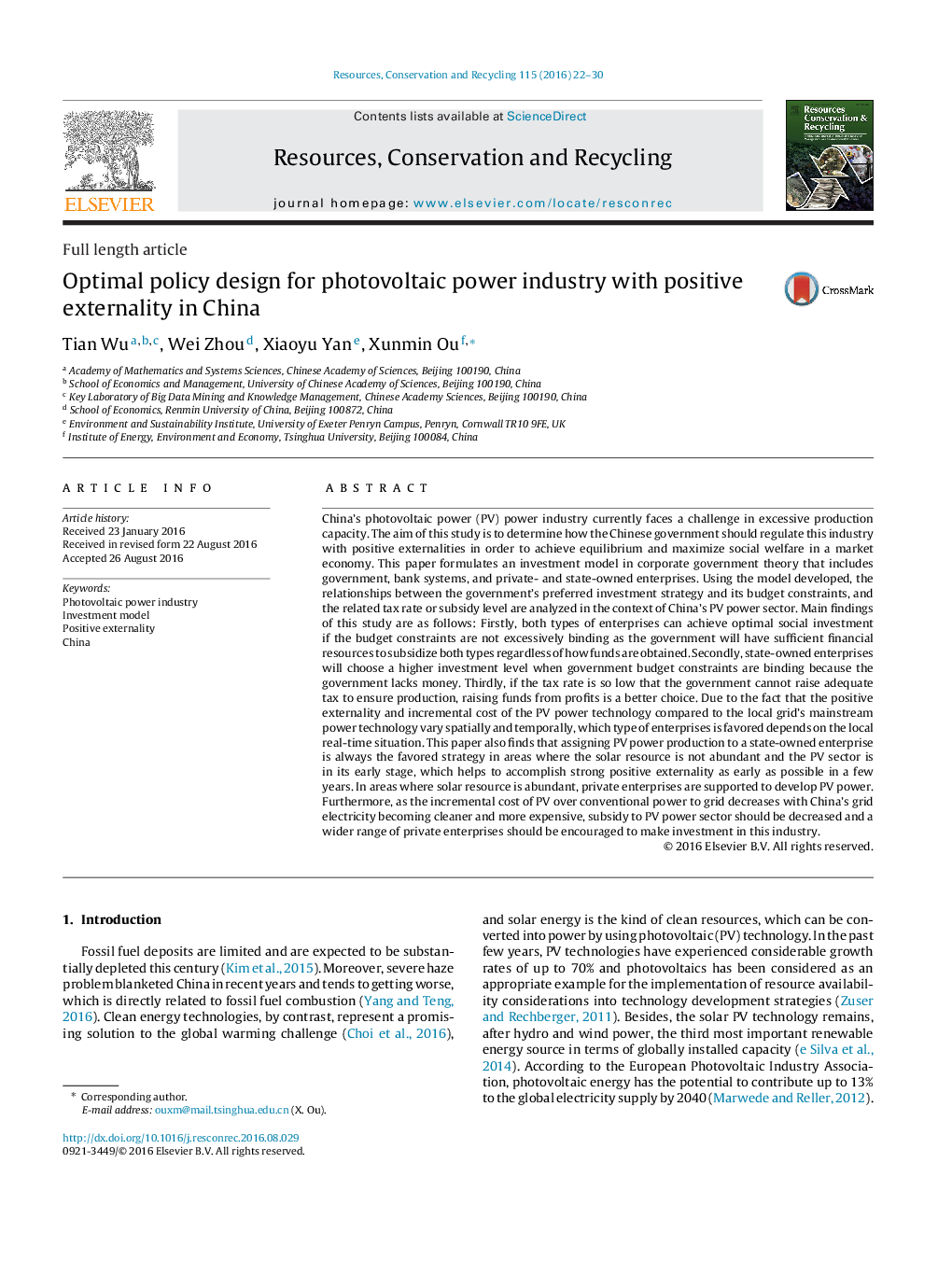| کد مقاله | کد نشریه | سال انتشار | مقاله انگلیسی | نسخه تمام متن |
|---|---|---|---|---|
| 1062652 | 1485676 | 2016 | 9 صفحه PDF | دانلود رایگان |
• An investment model in corporate government theory is built to analyze China’s PV power industry policy.
• Assigning PV power production to a state-owned enterprise is always the favored strategy in the area of resource-not-abundant to accomplish the strong positive externality.
• In the area of resource-abundant, private enterprises are supported to develop PV power.
• Subsidy to PV power sector should be decreased gradually and more and more private enterprises are welcome to invest in this industry.
China’s photovoltaic power (PV) power industry currently faces a challenge in excessive production capacity. The aim of this study is to determine how the Chinese government should regulate this industry with positive externalities in order to achieve equilibrium and maximize social welfare in a market economy. This paper formulates an investment model in corporate government theory that includes government, bank systems, and private- and state-owned enterprises. Using the model developed, the relationships between the government’s preferred investment strategy and its budget constraints, and the related tax rate or subsidy level are analyzed in the context of China’s PV power sector. Main findings of this study are as follows: Firstly, both types of enterprises can achieve optimal social investment if the budget constraints are not excessively binding as the government will have sufficient financial resources to subsidize both types regardless of how funds are obtained. Secondly, state-owned enterprises will choose a higher investment level when government budget constraints are binding because the government lacks money. Thirdly, if the tax rate is so low that the government cannot raise adequate tax to ensure production, raising funds from profits is a better choice. Due to the fact that the positive externality and incremental cost of the PV power technology compared to the local grid’s mainstream power technology vary spatially and temporally, which type of enterprises is favored depends on the local real-time situation. This paper also finds that assigning PV power production to a state-owned enterprise is always the favored strategy in areas where the solar resource is not abundant and the PV sector is in its early stage, which helps to accomplish strong positive externality as early as possible in a few years. In areas where solar resource is abundant, private enterprises are supported to develop PV power. Furthermore, as the incremental cost of PV over conventional power to grid decreases with China’s grid electricity becoming cleaner and more expensive, subsidy to PV power sector should be decreased and a wider range of private enterprises should be encouraged to make investment in this industry.
Journal: Resources, Conservation and Recycling - Volume 115, December 2016, Pages 22–30
